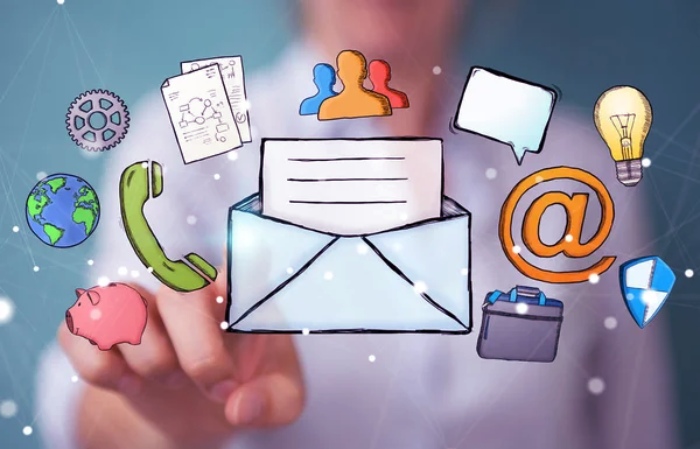SMTP Service Best Practices: Avoid Email
Failures And Improve Security
The Simple Mail Transfer Protocol (SMTP) plays a vital role in facilitating email exchanges over various networks. Nonetheless, if adequate security protocols and best practices are not followed, SMTP services risk exposure to cyber attacks, email delivery problems, and other failures. To maintain effective and secure email communication, it is essential for organizations to adopt strategies that bolster security, enhance email verification, and mitigate frequent issues.
Understanding Common SMTP Failures
SMTP issues may arise from a variety of factors such as incorrect settings, problems with authentication, and security weaknesses. Typical email failures encompass:
- Errors in SMTP Authentication: These arise when the credentials provided are incorrect or when authentication settings are not configured properly.
- IP Blacklisting Problems: If emails are sent from an IP that has been blacklisted, it can result in issues with deliverability.
- Misconfigured Server Settings: Incorrect settings on the SMTP server can result in emails being bounced or delayed.
- Spam Filter Interference: Emails might be categorized as spam if the sender has a poor reputation or if proper authentication measures are not in place.
Best Practices for Secure and Reliable SMTP Services
1. Implement Strong Email Authentication
To guard against email spoofing and phishing attempts, authentication is crucial. By employing authentication protocols, you can guarantee that only authorized senders have access to your SMTP service.
- SPF (Sender Policy Framework): Confirms that emails originate from permitted mail servers, which helps minimize the chances of spoofing.
- DKIM (DomainKeys Identified Mail): Employs cryptographic signatures to ensure the authenticity and integrity of emails.
- DMARC (Domain-based Message Authentication, Reporting, and Conformance): Establishes guidelines for managing emails that are not authenticated and protects against email spoofing.

2. Use TLS Encryption for Secure Transmission
Transport Layer Security (TLS) safeguards email transmissions by encrypting them, which helps to keep confidential information safe from unauthorized access. By utilizing STARTTLS, SMTP connections can be encrypted, minimizing the chances of data being intercepted. Furthermore, employing strong cipher suites guarantees a high level of encryption for secure email exchanges.
3. Monitor and Maintain IP Reputation
Having a low sender reputation may result in emails being rejected or the sender being blacklisted. It's essential for organizations to regularly check their IP reputation to guarantee that their emails are delivered successfully.
- Use Dedicated IPs: Dedicated IP addresses provide better control over email reputation compared to shared IPs.
- Regularly Check Blacklists: Use tools to monitor whether your domain or IP is blacklisted and take corrective actions if necessary.
- Implement Rate Limiting: Restricting the number of outgoing emails per hour prevents servers from being flagged as spam sources.
4. Configure Proper Reverse DNS (PTR) Records
PTR records, or Reverse DNS records, serve to confirm the authenticity of an email server. When correctly set up, a PTR record associates an IP address with a domain name, which can enhance email delivery rates and lower the likelihood of messages being flagged as spam. Additionally, routinely checking the PTR setup using online resources can help detect any misconfigurations that could negatively affect email delivery.

5. Implement Email Filtering and Spam Prevention Measures
Preventing spam emails from being sent or received is crucial for maintaining a clean and secure email environment.
- Implement Content Screening: Analyze outgoing emails for any potentially harmful content to stop the distribution of spam messages.
- Activate Greylisting: Briefly deny emails from unfamiliar senders, giving genuine ones a chance to resend, which helps minimize spam.
- Prohibit Access to Identified Harmful Domains: Keep updated lists of domains recognized for distributing malicious emails.
6. Regularly Monitor SMTP Logs and Analytics
SMTP logs offer crucial information regarding the effectiveness of email communications, attempts at authentication, and potential security risks. Consistent monitoring is essential for detecting and addressing problems before they worsen. Evaluating bounce rates can uncover possible configuration errors or issues with spam classification, while monitoring for unauthorized login attempts can reveal security vulnerabilities. Implementing real-time alerts facilitates prompt action against any suspicious behavior, thereby improving overall email security.
7. Keep SMTP Server Software Updated
Using obsolete SMTP server software can create security weaknesses that hackers might take advantage of. Keeping the software updated and applying patches regularly is essential for safeguarding against identified threats.
- Timely Implementation of Security Updates: Make certain that all SMTP software and its related components are kept up to date.
- Transition to Current SMTP Server Solutions: Shift from legacy servers to contemporary, more secure options.
- Perform Frequent Security Evaluations: Regularly review the security status of your SMTP servers. Explore this webpage to find additional details.